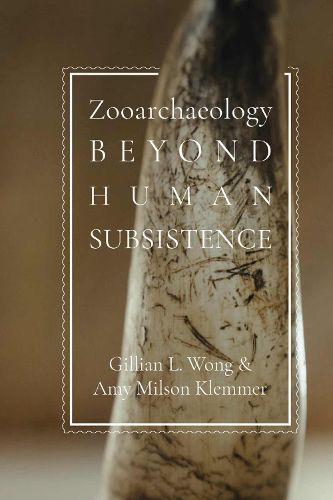Readings Newsletter
Become a Readings Member to make your shopping experience even easier.
Sign in or sign up for free!
You’re not far away from qualifying for FREE standard shipping within Australia
You’ve qualified for FREE standard shipping within Australia
The cart is loading…






Exploring other facets of past human-animal relationships beyond food
In this dynamic volume, Gillian L. Wong and Amy Milson Klemmer present seven groundbreaking chapters that delve into the diverse ways humans have interacted with animals in the past, as revealed through archaeological research into animal remains. Zooarchaeology beyond Human Subsistence explores a wide range of topics, from the role of animals in trade and prestige to their influence on cultural development and the shared spaces humans and animals occupied. The studies also highlight the importance of community engagement, showcasing collaborations between archaeologists and heritage communities.
Ideal for professionals and enthusiasts in archaeology, anthropology, zoology, biology, ecology, history, and beyond, this book offers a fresh perspective on zooarchaeology, emphasizing human-animal bonds, trade, ritual, and environmental impacts. With Spanish translations for chapters on South America, this volume invites a broader audience to explore the intricate web of human-animal interactions throughout history, offering insights far beyond mere subsistence.
$9.00 standard shipping within Australia
FREE standard shipping within Australia for orders over $100.00
Express & International shipping calculated at checkout
Exploring other facets of past human-animal relationships beyond food
In this dynamic volume, Gillian L. Wong and Amy Milson Klemmer present seven groundbreaking chapters that delve into the diverse ways humans have interacted with animals in the past, as revealed through archaeological research into animal remains. Zooarchaeology beyond Human Subsistence explores a wide range of topics, from the role of animals in trade and prestige to their influence on cultural development and the shared spaces humans and animals occupied. The studies also highlight the importance of community engagement, showcasing collaborations between archaeologists and heritage communities.
Ideal for professionals and enthusiasts in archaeology, anthropology, zoology, biology, ecology, history, and beyond, this book offers a fresh perspective on zooarchaeology, emphasizing human-animal bonds, trade, ritual, and environmental impacts. With Spanish translations for chapters on South America, this volume invites a broader audience to explore the intricate web of human-animal interactions throughout history, offering insights far beyond mere subsistence.